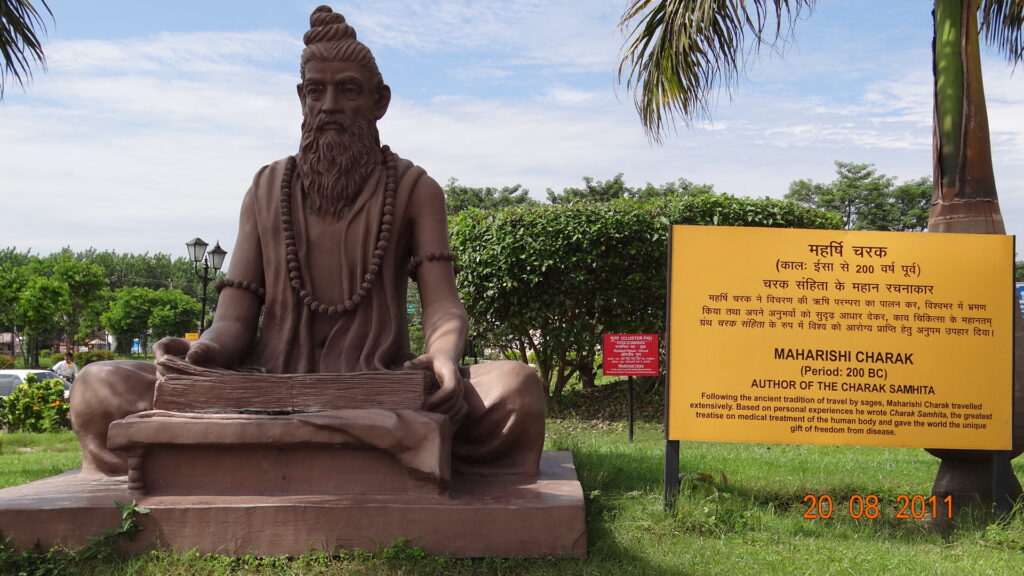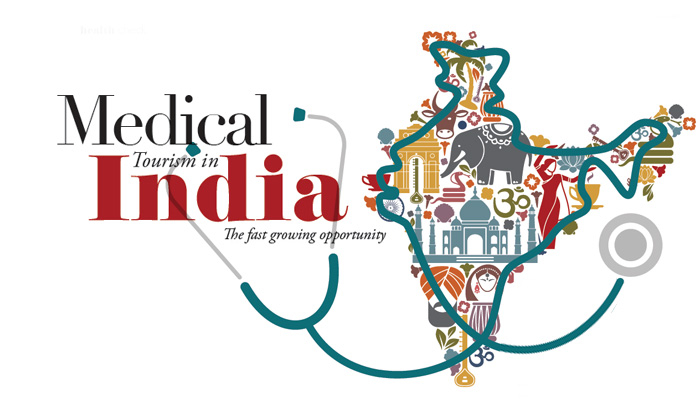The history of Indian medical science is rich and diverse. The roots can be traced back to the Indus Valley civilization (2600 BCE–1900 BCE). Archeologists have found evidence that tooth drilling and trephination were practised during this era. After the decline of the Indus Valley civilization, the Vedic Period (1500 BCE–600 BCE) marked a significant development in Indian medicine.

The Vedas, ancient religious texts, contain references to various ailments, medicinal herbs, and healing practices. The earliest known collection of medical knowledge is preserved in the Atharvaveda, which was initially transmitted orally during ancient times. The Atharvaveda encompasses various sections dedicated to topics such as longevity, the treatment of ailments, specific disease remedies, germ eradication, poison antidotes, recommendations for healthy dietary practices, and the promotion of a balanced lifestyle. The ancient Indian civilization was way ahead of its time.
The Sutra period began around 600 BCE and is marked by the compilation of influential texts that established systematic frameworks for medical knowledge and practice. Among these texts is the Charaka Samhita, authored by the sage Charaka, which covers anatomy, physiology, diagnosis, and treatment. Also, the Susruta Samhita, attributed to the sage Susruta, focuses on surgery, offering detailed descriptions of surgical procedures and instruments.

The era between 600 BCE and 1000 CE witnessed the rise of various schools of medical traditions, including Ayurveda, Siddha, and Unani. Ayurveda further expanded the knowledge base of Indian medicine through texts like the Ashtanga Hridaya and the Bhela Samhita. During Medieval times, the influence of Arab and Persian physicians merged with the pre-existing medical traditions. Avicenna and Rhazes made significant contributions.
In the 17th century, British brought modern medicine to India. The healthcare establishments and western medical education integrated Allopathic medicine into the Indian system. This phase witnessed the development of public health infrastructure and medical research institutes.
Since independence from colonial rule, medical education and the healthcare sector have undergone tremendous growth. In 1956, the establishment of the All India Institute of Medical Sciences (AIIMS) was the first step.
As of today, India has a vast network of hospitals, research institutions, and medical colleges.
India is one of the major players in the medical tourism industry. The number of foreign tourists arriving in India for medical purposes was 1.83 lakh in 2020 and 3.04 lakh in 2021.
India was ranked 10th in the Medical Tourism Index (MTI) for 2020–2021 out of 46 destinations in the world by the Medical Tourism Association. The Government of India, to promote Medical Value Travel (MVT), established and adopted a dedicated National Strategy and Roadmap for Medical and Wellness Tourism.
The Ministry of Tourism also provides support under the Marketing Development Assistance (MDA) scheme for Wellness Tourism Service Providers (WTSPs) and Medical Tourism Service Providers (MTSPs). The Union Ministry of Health and Family Welfare (MoHFW) coordinates with other ministries, viz., the Ministry of Home Affairs, Tourism, AYUSH, External Affairs, Civil Aviation, State Governments, and other stakeholders, to promote MVT in the country.
Under the “Heal in India” initiative, the Ministry of Health and Family Welfare has developed the Medical Value Travel Digital Portal for the ease of foreign patients coming to India for treatment.
So what does India offer, and why should it be a destination for medical tourism?
Here are some of the compelling factors that make India a thriving destination for MVT across the world.

a) State-of-the-Art Facilities
India is home to top-notch medical facilities. Many hospitals and clinics in the nation are recognized worldwide and furnished with cutting-edge medical technology. These facilities provide a wide range of medical specialties and uphold international standards, guaranteeing that patients receive high-quality healthcare.
b) Cost-effectiveness
Medical procedures in India are substantially less expensive. Medical costs, such as those associated with treatments, surgeries, and post-operative care, can be reduced by 50% to 70% for patients in comparison with other countries.
c) Highly skilled medical professionals
India is recognized for its pool of such professionals. Prestigious medical institutes around the world provide education and training to Indian physicians, surgeons, and healthcare professionals.
d) Shorter waiting periods
Compared to countries with overburdened healthcare systems, India offers the benefit of shorter waiting periods for treatments and surgeries. Patients can frequently schedule their operations quickly, which shortens the waiting time and enables them to get urgent medical care.
e) Ayurveda and alternative therapies
People looking for holistic and alternative treatments are drawn to India’s ancient healthcare systems, including Ayurveda, Yoga, and Naturopathy. In particular, Ayurveda offers a holistic, all-natural method of healthcare that emphasizes disease prevention.
f) Easy accessibility and visa facilitation
India’s robust domestic transportation infrastructure and well-connected international airports make it simple for medical tourists to travel. Additionally, the Indian government has put in place visa facilitation policies, such as medical visas, making it simple for patients to travel to India for treatment. For further information, click here.
g) Post-treatment recuperation options
India offers a range of post-treatment recovery choices, including tranquil wellness resorts and Ayurvedic retreats. These serene settings provide a calm and restorative setting for individuals to recover and restore their strength after medical operations.
h) Warm hospitality and diverse culture
India is known for its hospitable people and rich cultural diversity. Particularly in metropolises and hospitals, English is commonly spoken and understood. Communication between patients and medical staff is made simpler by their shared language, ensuring clarity and understanding throughout the course of treatment.
For more information on hospitals, doctors, treatments, facilitators in India Click Here.
Like our content? Stay connected through our various platforms. (Facebook, Instagram, Linkedin)
#safewithSITATA



